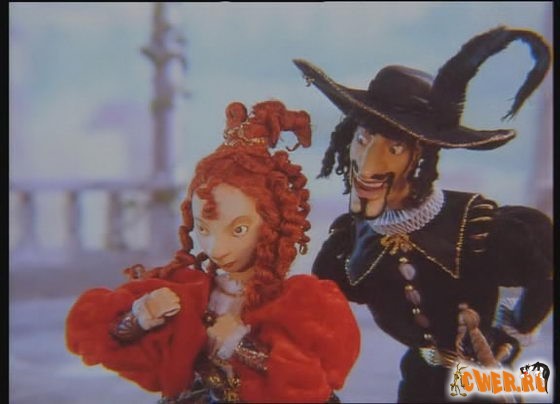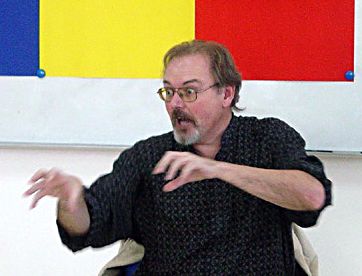 the time) in execution: The texts, superbly sliced by Leon Garfield, abridgements rather than rewrites; the animations various in style, all of the highest quality, filmed in the studios of Russia; the voices of actors from the ‘British tradition’ many of whom have performed Shakespeare on stage with organizations like the RSC and The National Theatre.
the time) in execution: The texts, superbly sliced by Leon Garfield, abridgements rather than rewrites; the animations various in style, all of the highest quality, filmed in the studios of Russia; the voices of actors from the ‘British tradition’ many of whom have performed Shakespeare on stage with organizations like the RSC and The National Theatre.
The idea is to provide short introductions to the plays which are accessible to a young audience but which don’t make sacrifices to the gods of patronization or oversimplification and which not only inform but entertain.
The Taming of the Shrew is not an exception – it is an intelligent romp through the basic story with some witty stop-gap animations and a perception of the original play worth thinking about.
Unlike many ‘full text’ productions, which cut the framing device, the film starts with the drunken Sly bouncing out of the ale house, and being picked up by the ‘lord’ and his retinue: Sly literally replaces the wild boar on the huntsmen’s pole. Although the words are cut, this makes clearer than the spoken words the line:
‘O monstrous beast, how like a swine he lies’
and illustrates nicely the subtlety this animated version attains – it is an image which fixes the metaphor, fixes it fast, and amuses.
The Sly scenes are kept, I think, to highlight the ‘play-within’ device – throughout the film there are curtains and stages, applause and a character crossing through the invisible wall. Leon Garfield (with the advice of Stanley Wells – who is credited?) has been true to his source and seems to be maintaining the necessity of remembering this is not real – this is only a tale – which, when added to the alienating effect of the characters being animated, really drives home the question of how ‘real’ the plot is meant to be taken.
Does the ‘Taming’ present a piece of advice (which Sly mistakenly takes it for at the end and ends up bouncing again) or is it an exploration of extremes?
Is this a cathartic experience – like Tom and Jerry?
These are not questions for the children who form the principle intended audience of the tale – but they do illustrate the way that the animations have been ‘intelligently’ constructed – they are planting seeds for later revisitings, providing strong images to connect to when you see the play live on stage.
And, because the audience is meant to be young, there is a strong narrative line given to the story which is, after all, a ‘Tale’. This has meant a degree of reorganisation – the Bianca story is separated out and tagged on to the end; after the initial Sly story, we move straight to Kate and Petruccio – and stay focused on the interchange between them.
 This works remarkably well. I can imagine young people being able to follow the twists and turns of Shakespeare’s plotting much more easily after seeing this – more so than after reading the text: Inventive teaching would have to work pretty hard to do as good a job.
This works remarkably well. I can imagine young people being able to follow the twists and turns of Shakespeare’s plotting much more easily after seeing this – more so than after reading the text: Inventive teaching would have to work pretty hard to do as good a job.
Katherine and Petruccio also illustrate nicely the clarity animated figures can bring to a production – both characters here are handsome – and young; both are lively and spirited – there is one point where the dialogue is supported by a ‘dance’ competition; both ‘express’ through pose - which would strike one as odd in the theatre. Facial expression is there – and unambiguous.
To go with the excellent animation the voices are clear, the dialogue paired down to essentials, and meaning consequently not difficult to follow. As indicated above, there are directorial insertions which support the words when necessary, sometimes obviously, sometimes less so: I could not tell you why, but I was very aware the morning after watching that there were three kisses.
The Director (Aida Ziablikova) and Designer (Olga Titova) are Russian – and demonstrate what I’ve known for some time, not only the English have the ability to turn out fantastic Shakespeare.
‘High Production Values’ is a term you sometimes here connected with expensive ‘artistic’ films, and less artistic blockbusters – well, it is also a term you can apply to smaller scale (if half-an-hour of animation is smaller scale) work – and I don’t think you’ll find higher production values than in this series of Animated Tales!





No comments:
Post a Comment